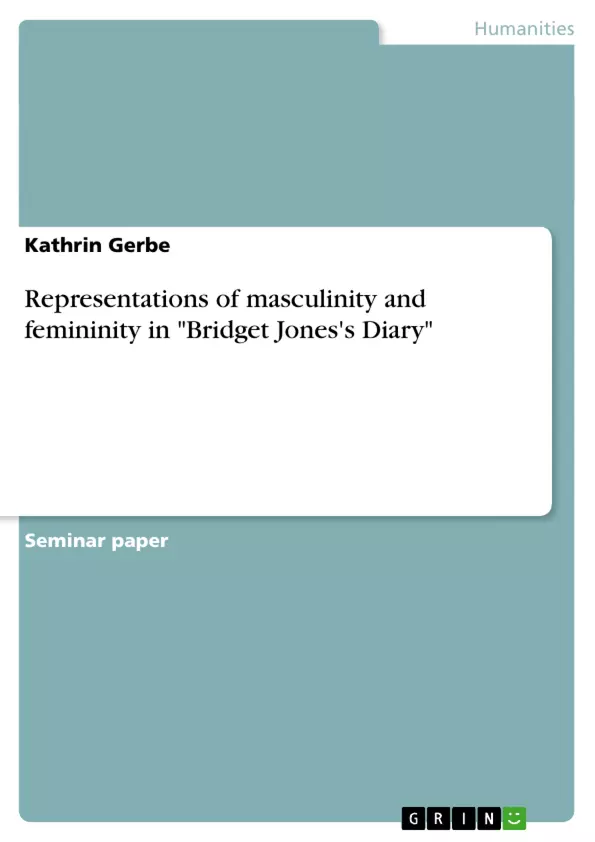This essay introduces various concepts of identity formation, including hegemony, discursive formation and invented categories. On the basis of these concepts, it discusses masculinity and femininity in the movie "Bridget Jones's Diary", comparing the leading men Daniel Cleaver (Hugh Grant) and Mark Darcy (Colin Firth) with each other, and the heroine Bridget Jones (Renée Zellweger) with the seemingly perfect Natasha. Secondly, the essay seeks to evaluate the role of the feminine gaze and objectification of Cleaver and Darcy.
Inhaltsverzeichnis (Table of Contents)
- Representations of Masculinity and Femininity in Bridget Jones's Diary
- Masculinity
- Femininity
Zielsetzung und Themenschwerpunkte (Objectives and Key Themes)
This essay examines the representations of masculinity and femininity in the movie Bridget Jones's Diary. It analyzes how these representations relate to concepts of identity formation, particularly hegemony, discursive formations, and invented categories.
- Hegemonic Masculinity and Femininity
- Discursive Formations and Invented Categories
- The Feminine Gaze and Objectification
- The Role of Media Representations in Shaping Identity
- The Negotiation of Traditional Gender Roles in Modern Society
Zusammenfassung der Kapitel (Chapter Summaries)
- Representations of Masculinity and Femininity in Bridget Jones's Diary: This section introduces the concepts of hegemony, discursive formations, and invented categories as frameworks for analyzing representations of masculinity and femininity. It also discusses the significance of the feminine gaze and objectification in the movie.
- Masculinity: This chapter explores different interpretations of hegemonic masculinity and analyzes how the male characters, Mark Darcy and Daniel Cleaver, embody contrasting masculine ideals. It examines how these characters challenge or uphold traditional notions of masculinity.
- Femininity: This section focuses on the portrayal of Bridget Jones as a character shaped by societal expectations of femininity. It discusses the influence of "Cosmopolitan culture" and the pressure to conform to ideals of beauty and success.
Schlüsselwörter (Keywords)
The key terms and concepts explored in this essay include hegemony, discursive formations, invented categories, masculinity, femininity, feminine gaze, objectification, media representations, identity formation, and cultural stereotypes. These concepts are used to analyze the portrayal of gender roles and identity construction in the movie Bridget Jones's Diary.
- Arbeit zitieren
- BA, MA Kathrin Gerbe (Autor:in), 2007, Representations of masculinity and femininity in "Bridget Jones's Diary", München, GRIN Verlag, https://www.grin.com/document/75178



